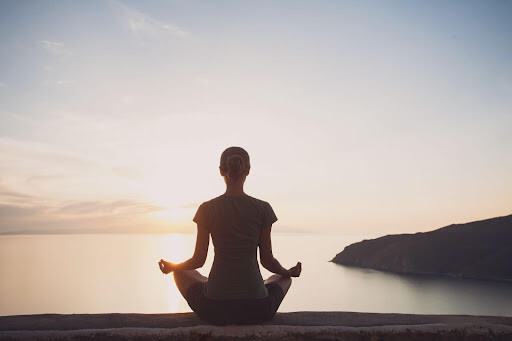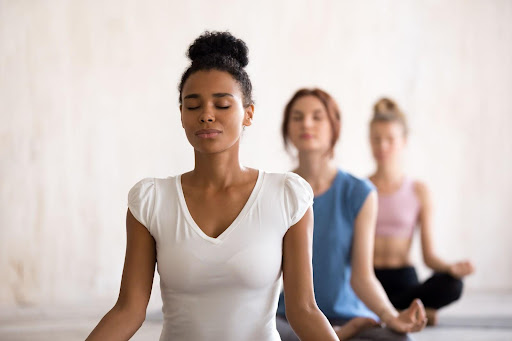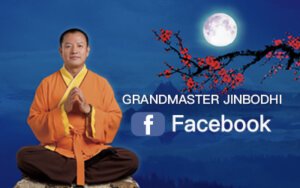How to sit when meditating? It’s a common misconception that to meditate properly, you must twist your body into a pretzel or sit in a full lotus pose. You can meditate in any posture so long as it is comfortable for you to do so. The best meditation poses enable you to relax and focus on your meditation. With that in mind, when picking a meditation posture, you should follow several crucial recommendations.
Have a look at the following approaches on how to sit when meditating to find which one works best for you. Everyone’s physical state and health status is unique. For some people, sitting with crossed legs for longer than five minutes, may cause your shin to go to sleep or your feet to become numb. Others can only sit in chairs due to back or leg problems – but the good news is that none of these are obstacles to meditation! You may also find that certain postures allow you to maintain a more upright posture. Experiment with each one to see which one will serve your needs the best.

Different Positions to Sit In When Meditating
When doing meditation or chanting, posture is essential. Don’t lie on your back while meditating. The effects of practicing in a cross-legged sitting position far exceed those of practicing while lying down. Given the same duration of practice, you gain more while practicing in a cross-legged position.
There are three general types of how to sit when meditating: sitting on the floor, sitting on a chair, and kneeling poses. You may try out any of the options listed below regarding how to sit when meditating:
Sitting Cross-Legged
Regarding how to sit when meditating, sitting cross-legged (also known as ‘Easy Pose’) may be performed with or without props. Sit on your cushion or pillow with your legs crossed. Both feet should touch the floor. Put your hands in a relaxed position, palms up, on top of your knees.
Your meditation cushion should be dense and supportive, preferably with a higher back and lower front. If you are practicing a lot but not seeing results, it may be because of your meditation cushion: the height, angle, or the other meditation items you use. If you don’t have a meditation cushion, you can sit on pillow and fold some blankets.
This posture is challenging since it is quite easy for your legs to fall asleep in this position. To help this, You may extend your spine by tilting your pelvis slightly forward before sitting back. You may also use a prop like a small block or second cushion under your bottom to further elevate your seat. This will help your legs from going to sleep by further tilting your pelvis forward.
Sitting with crossed legs is a good way to practice seated meditations such as guided visualizations or chanting. When you sit in cross-legged meditation, you resemble the shape of a pyramid, much like traditional sculptures of Buddha seated in meditation. This shape offers the most powerful energy, which is why Buddha statues are built in the shape of an equilateral triangle.
Half-Lotus
When it comes to how to sit when meditating, the Half Lotus pose is somewhat similar to sitting cross-legged. To sit in Half Lotus pose, one leg should rest folded on the ground, and the other leg will be crossed on top. Your top foot can rest on the calf or thigh of your bottom leg. Put your hands in a relaxed position, palms up, on top of your knees.
When getting settled in half-lotus, you may lean forward to fully extend the spine and tilt the pelvis into the proper position before sitting back. Try to sit up straight, but also relax your body. As with sitting cross-legged, you may add an additional block or cushion under your bottom to make it easier. If you cannot maintain this position for an extended period, you may return to sitting cross-legged.
Full-Lotus
The Full Lotus posture is another way of how to sit when meditating. To get into Full Lotus, you can start by sitting in the Half Lotus position with one leg on the bottom and the other crossed on top. From there, work your way up to the Full Lotus position. Move your top foot onto the thigh, toward the hip, then, take your bottom foot and raise up over your other thigh. You will end up with only your legs touching the ground, and both feet resting on your thighs. Put your hands in a relaxed position, palms up, on top of your knees.
The Full Lotus is the meditation position that most exemplifies symmetry and stability. Beginners may find it challenging to put both feet on the opposite leg’s thigh. Never put unnecessary strain on your knees by trying to push your body into this stance. It is not necessary to sit in Full Lotus in order to have a meditation experience.
When sitting in either the half or full lotus position to meditate, you should ensure that your spine is aligned properly and that your knees are not too far apart. If not, you can use another meditation seat until you are flexible enough to maintain the correct alignment. You may lean forward to fully extend the spine and tilt the pelvis into the proper position before sitting back. Try to sit up straight, but also relax your body. As with sitting in Half Lotus, you may add an additional block or cushion under your bottom to make it easier.
Sitting Against a Wall
If you are just starting meditation, you may find sitting cross-legged, sitting in Half Lotus, or sitting in Full Lotus to be strenuous on your back. Supporting your back with a wall is another tip for how to sit when meditating. If you are pressed against the wall, you should support your waist with a cushion or pillow between your body and the wall. This also helps protect your body from the coldness and hardness of the wall, which is very important while we are relaxed and meditating.
The health risks associated with a chilly wall are significant. If you sit against the wall and meditate, you should switch off the air conditioner. When a draft is going around the room, being too close to the wall might make you feel ill. Your room has an uncomfortable amount of drafts clinging to the floor and the walls. You are more likely to feel the chill of a draft if you are closer to the wall. If these drafts reach your body while you are relaxed and meditating, you can easily catch a cold or experience other detrimental effects on your health.
Sitting in a Chair
If none of the positions above work for you, you may still be wondering about other options for how to sit when meditating. If sitting on the ground is difficult for you, you may try sitting in a chair for meditation. All you need to do this is find a chair with a straight back and plant your feet on the ground. It is best to find a chair with armrests too. Since we close our eyes during meditation, this can prevent us from accidentally losing our balance and falling off the chair. Safety is most important.
If sitting up straight without any support is difficult on your back, you may find that placing a couple of cushions between your back and the back of the chair provides some relief.
Kneeling
Another option for how to sit when meditating is kneeling. To achieve a kneeling posture for meditation, kneel on a thin cushion. Your body should be upright, at a 90-degree angle with your legs.
You may be wondering about how to choose between all these options when considering how to sit when meditating. Kneeling poses are considered secondary, supplemental meditation poses. When kneeling for chant meditation, it should not be for more than 10 minutes. Rather, for most of a chanting session, sit cross-legged, in Half Lotus, or in Full Lotus pose after a few minutes of the kneeling posture for the best meditation results.
Whether to kneel will depend on your age and practice time. People over 40 years old, especially women, tend to suffer from osteoporosis. Osteoporosis causes bones to get injured easily, so it is important to protect our legs and joints during chanting. Kneeling may cause injuries. For sincere repentance, we can chant while kneeling, but our legs may get hurt – it is alright if you don’t mind.

Diamond Pose (Sitting Back on the Heels)
Diamond Pose is another kneeling posture of how to sit when meditating. To get into Diamond Pose, kneel on a thin cushion, then sit back onto your legs. Your ankles should be positioned below your bottom, and your shins should be flat on the floor. Please remember to sink your weight back and down into your hips as you do this practice. Hence, you won’t be placing excessive strain on your knees.
In chanting, sitting cross-legged is the main way. It is the best method to practice. Please note that kneeling and diamond pose are secondary methods. If you want to utilize secondary ways, you should be extremely careful not to injure your knees. Don’t kneel or sit back on your heels for too long – no more than 10 minutes. If you are chanting in a kneeling position, when you start to feel tired, you may adopt the diamond pose. Then follow that with sitting cross-legged. Alternate between the 3 ways. We can chant for a longer time if we sit cross-legged.
Start Meditating in a Comfortable Posture!
Bodhi Meditation has over three decades of experience in teaching meditation for the stresses and strains of 21st-century living, regardless of how to sit when meditating – cross-legged, in a chair, or kneeling. Bodhi Meditation offers guided visualization meditation and chanting meditations for those who like to practice meditation while seated, and also offers standing and walking meditations. Our easy-to-access sessions will assist you in cultivating more compassion, regenerating health and wellness, recharging your body and mind, sharpening your attention, lowering your stress levels, and enhancing your sense of well-being and happiness.
Start experiencing the positive effects of regular meditation at Bodhi Meditation – click here and join us!

